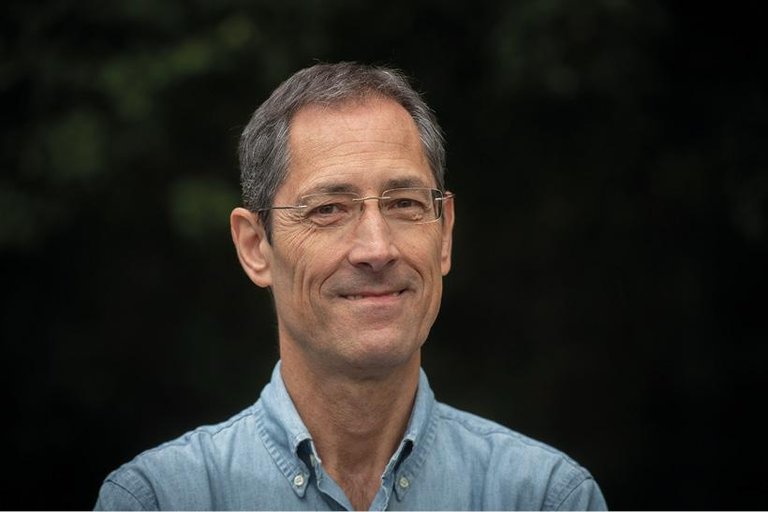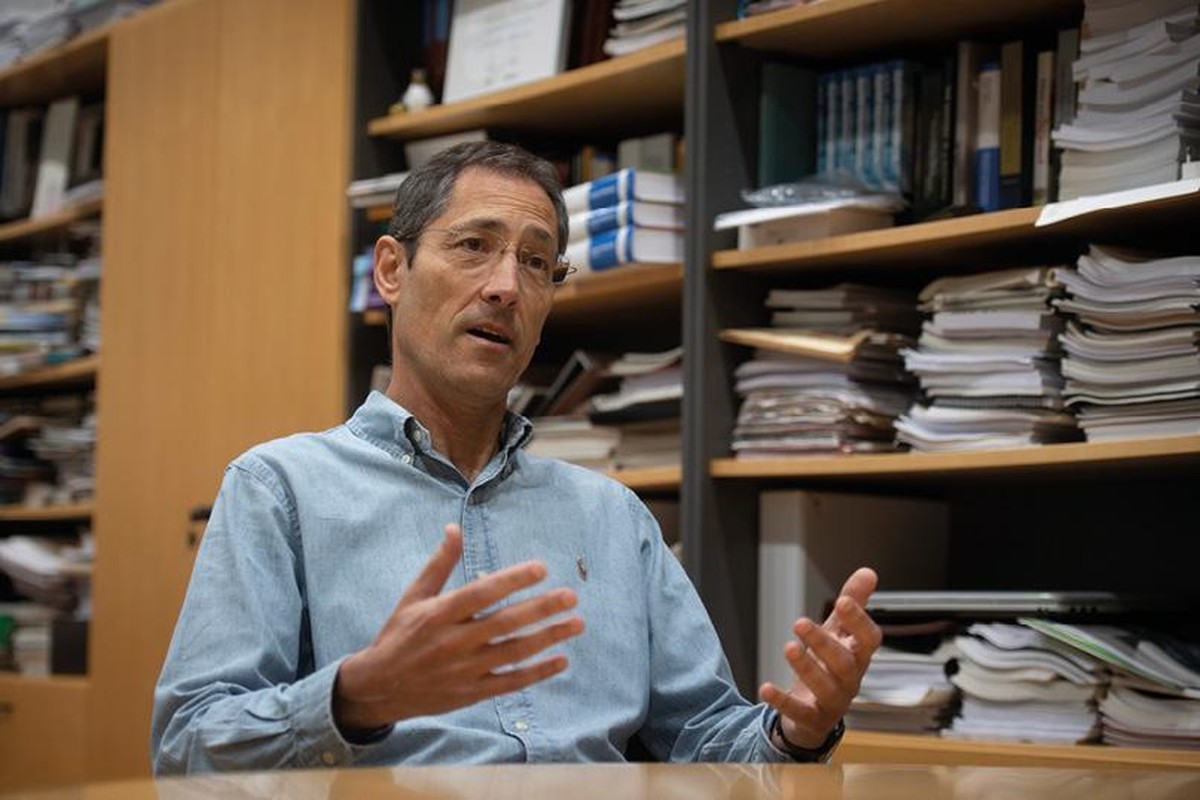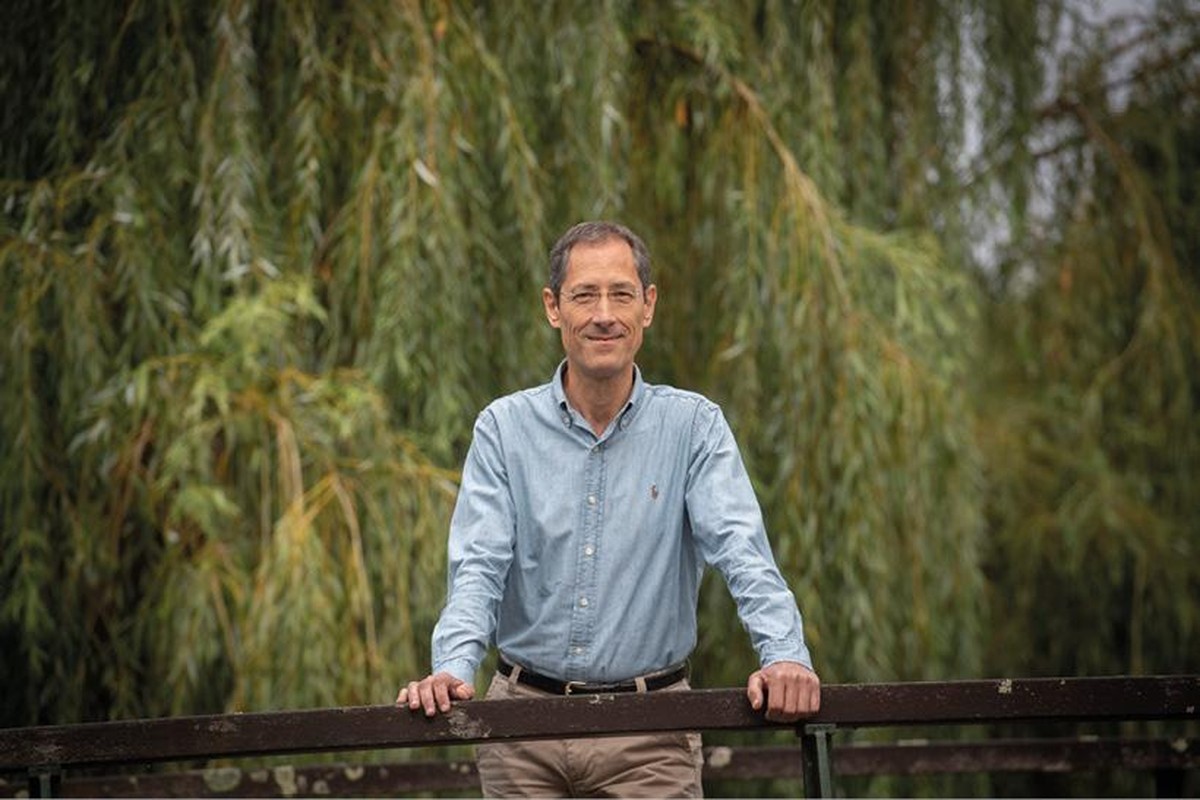“I would like nanotechnology to alleviate the pain of disease.”
Txema Pitarke lives immersed in the world of the dwarf. You can see how impressed it is that humans have acquired the ability to manipulate atoms and molecules one by one. He talks about quantum technologies, but when asked what he would like nanotechnology to contribute as a priority, he is clear about it: relieving people’s suffering. Pitarke is also Director of nanoGUNE, Professor of Physics at the UPV/EHU and President of the Elhuyar Foundation.

I've given him everything I can. It's my job and it's also my hobby. Not a single hobby, of course, but one of the most important.
More than I have given him: a profession that I love; also a way of understanding the universe and our environment. I believe that any profession influences the way one sees life, and even more so science. It provides a special way of understanding life. Science has also given me the indispensable resources for my personal and professional development.
When I was young I liked a lot of things, not just physics. When I was a student at the university, I was fascinated by formalism: theoretical physics, cosmology, high energies, particles... Finally, I dedicated myself to the physics of condensed matter. In my thesis I did theoretical work on the physics of the tunnel microscope, among other things. The tunnel microscope, newly developed at that time, has become a very important tool that started nanotechnology.
I was completely involved in the Cambridge investigation at the time. One day, Etxenike came to me from the Basque Country and at dinner, he surprised me with the proposal of whether I would create a nanoscience research center in San Sebastian, starting from scratch. The next day I said yes. I was doing a very interesting research in Cambridge, but when I saw in front of my eyes the possibility of building a project like this from scratch, I wanted to face the challenge.
I brought a way of doing science from the Anglo-Saxon world. Without realizing it, you bring it with you. Flexibility, spontaneity, creativity and a high turnover of researchers, which goes against the perspective of officials.
Many important discoveries have been made in physics in the last 50 years: it has been clarified that neutrinos have mass, gravitational waves have been discovered, the Higgs boson... But perhaps the greatest challenge that physics has overcome has been to acquire the power to manipulate atoms and quantum objects in general (atoms, electrons, photons...) one by one. This is where nanotechnology and quantum technologies come from.
Quantum physics was completed at the beginning of the 20th century. Hence came the first technological revolution in quantum physics: transistor, laser, etc. And in 1982 a very important experiment was carried out, thanks to the power we developed to manipulate photons one by one: The Alain Aspect experiment. With this experiment we learned that quantum entanglement has a real nature and thus ended the long debate between Einstein and Bohr, the two best physicists of the 20th century. The conclusion of the experiment was conclusive: Einstein was wrong.
In the experiment it was observed that when two photons are quantitatively entangled, if we measure the polarization of one of the photons, we can predict with absolute certainty the result of the simultaneous measurement of the polarization of the other photon, even if the second photon is very far away, as it is a mysterious and superluminous communication between the two. For me, this experiment was horrible. It was made in the year I finished my studies in physics, and that’s how I got involved in research later, just clarifying the essence of quantum physics. This experiment opened the doors of the second technological revolution in quantum physics, which allowed the exploitation of quantum entanglement technologically. This discovery did not lead to the Nobel Prize, but I think it should at some point [the interview was conducted before the announcement of this year’s Nobel Prizes, and it has been later discovered that Alain Aspect will indeed receive the Nobel Prize in Physics].
In this original experiment by Alain Aspec the entangled photons were separated several meters from each other, but then it has been observed that the quantum entanglement remains even separated by a thousand kilometers. in 2015 this experiment was definitively confirmed, also with photons and electrons, which has led to the development of quantum technologies: quantum computing, quantum communication, quantum cryptography, quantum Internet... They are all based on the following two properties of quantum physics: super-state and entanglement. This experiment opened a large door that was closed until then. Some will say that the Higgs boson was more important than that, or gravitational waves. I’m not going to say it was the most important discovery of the last 50 years, but I was particularly impressed by the Aspect experiment.
I don’t know what the situation will be 50 years from now, but these are the challenges we face today as a human group: the sustainability of the planet, energy, water and medicine, among others. And I would like science in general, and physics in particular, to help address these challenges.
In order for sustainability to be real, it is necessary to change some ways of living, technology as such cannot do it. But this is where the contribution of nanotechnology could be great. Our ability to create and functionalize nanostructured materials will allow us to have better materials for industrial manufacturing processes and make these processes more sustainable. Energy as well. The contribution of nanotechnology will be significant in energy storage, as well as in energy transformation, in the ability to change from one type of energy to another.
But in particular, I would like to see the value of nanotechnology in medicine. Above all, I would like to see nanotechnology alleviate the pain of diseases. There will always be diseases; if they are not present, others will come. This is inevitable. But will we be able to mitigate the unnecessary painful consequences of diseases? I am ready to die, but to suffer? Nanotechnology can make a great contribution to medicine. We have made a lot of progress in the last decade, and very quickly, but there is still a lot to be done.
At the moment, we have the main challenges in three areas: materials, nanomedicine and quantum technologies. In materials, we investigate two-dimensional materials that have the thickness of a single atom. We started with graphene. This is where we later founded the company Graphenea for the production and marketing of graphene. Nowadays, countless new two-dimensional materials have been created, and we are able to mix these materials layer by layer, as in a LEGO, always to obtain new properties.
On the other hand, we are currently strengthening the fields of nanomedicine and quantum technologies, taking advantage of the fact that we have the perfect infrastructure for this. For quantum technologies, for example, it is very important to achieve one-to-one control of nanoscale objects; nano-fabrication and advanced microscopy are also required; and extremely low temperatures, so that the atoms are completely stationary, without vibration. temperatures as low as 10-15 millicelvin are typically required, very close to absolute zero (-273°C).
I think we’ve come a long way, but it’s not easy, because people still don’t feel that science is part of culture. In the Anglo-Saxon world, this area has always been cultivated so that society can be scientifically clothed. Science is not to obey what a scientist says, science is to verify everything, to contrast everything, and to go as far as possible to the source. I don't think these values are internalized in our society today. There must be a strong commitment to the spread of science.
And in communication we have to be careful with the exaggerated expectations that sometimes arise with respect to science, otherwise this later causes despair in society. We must not fall into speculation. Science is often the accumulation of many small individual contributions, the collective result of thousands of contributions. We must be careful with what we say each time we make an individual contribution. We need to measure the message.
I think Elhuyar has managed to achieve a balanced evolution. 50 years ago, when it was founded, Basque was not dressed for science, and there Elhuyar has done an incredible job of making and communicating science in Basque. And then he has managed to diversify his practice towards technologies such as language technologies and artificial intelligence.
From now on, we don’t know what the future holds. When opportunities come, it’s important to stay vigilant and take advantage of them. We need to be dressed so that we can take advantage of these opportunities when new things and opportunities arise.
Buletina
Bidali zure helbide elektronikoa eta jaso asteroko buletina zure sarrera-ontzian













